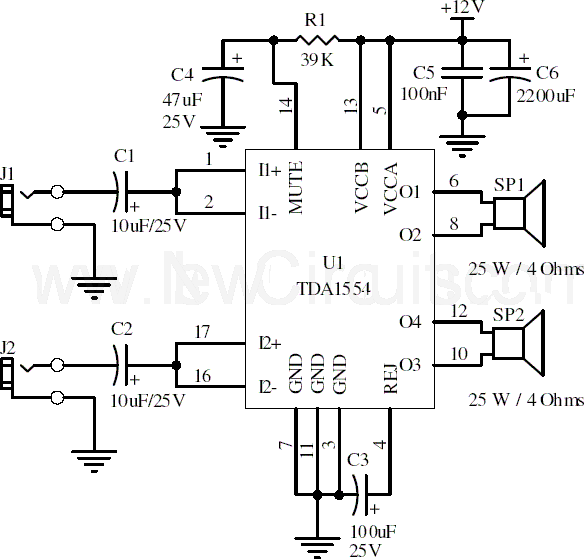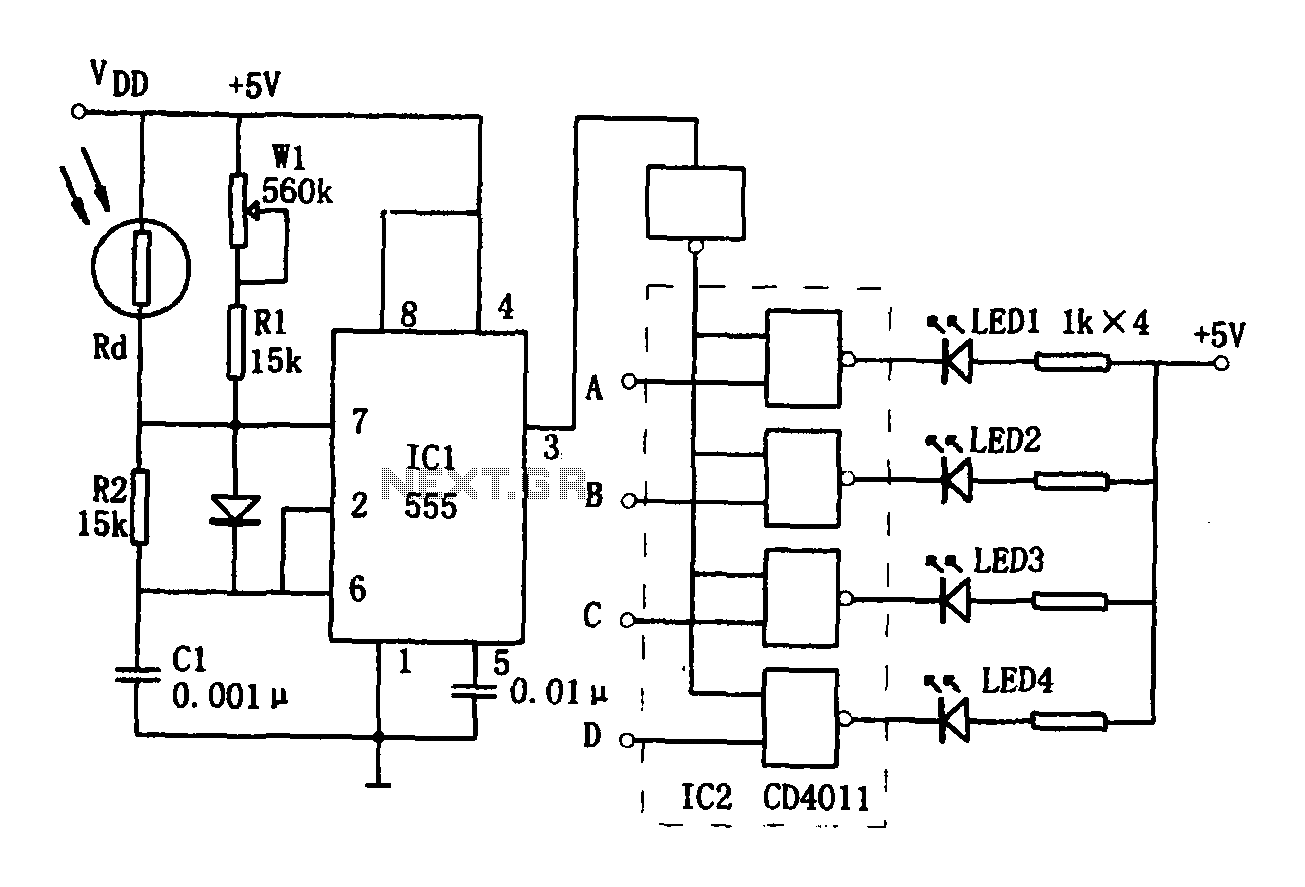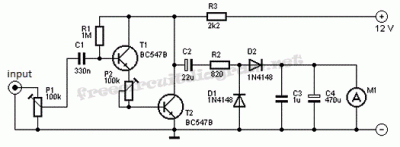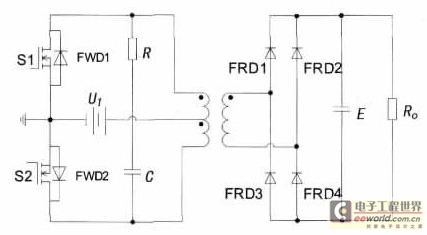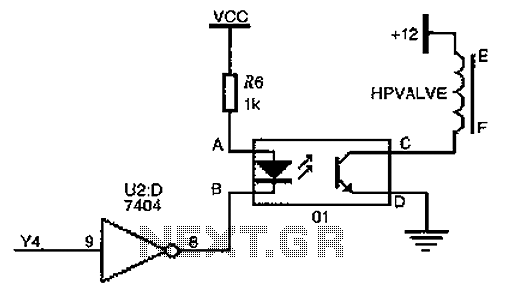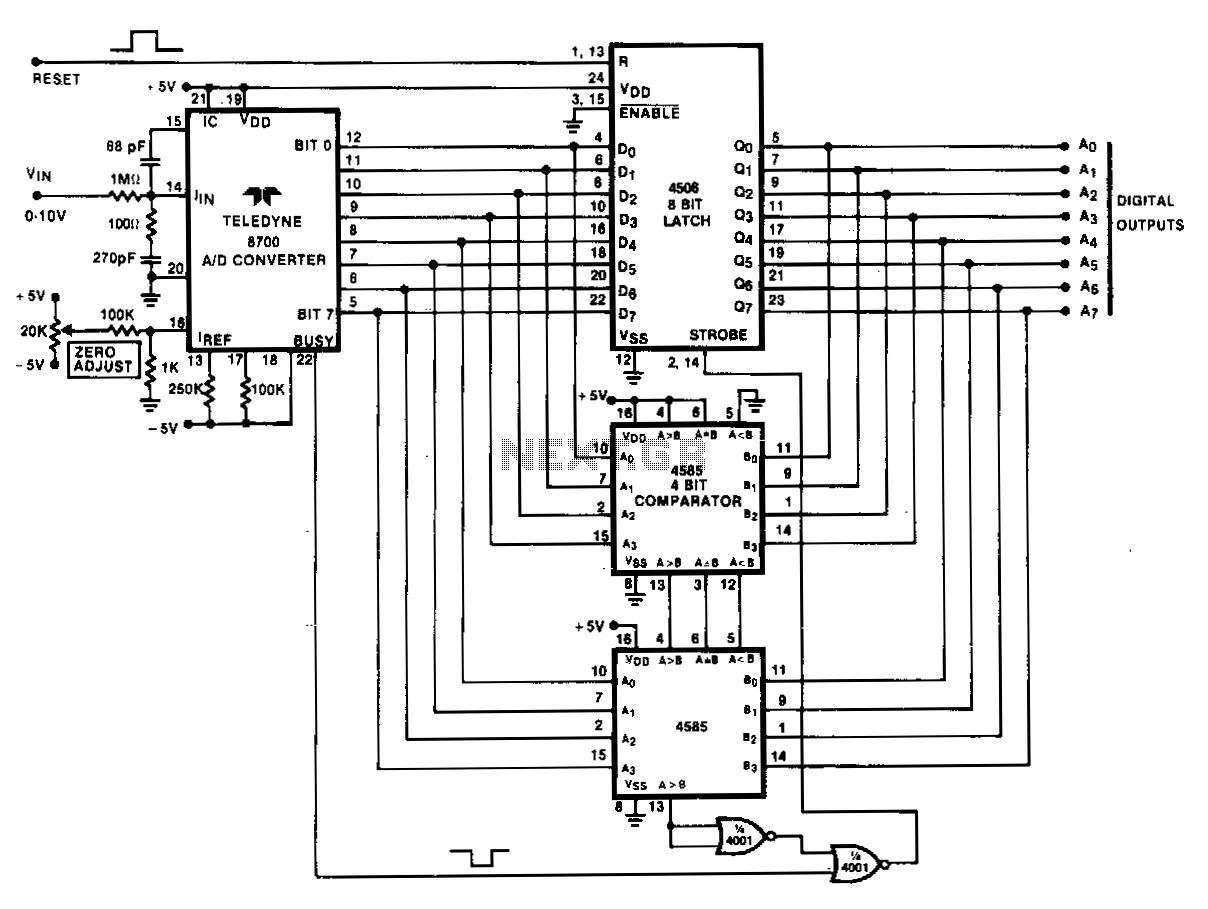
A digital display timer circuit diagram
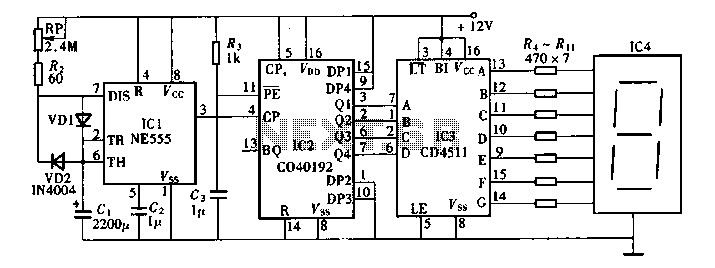
Digital timers feature a clear and precise display. They represent time intervals based on pulse signals, which are decoded by a digital device with a digital display unit. The circuit described pertains to a digital display for these timers, which operates according to a time base signal that can be in seconds or other divisions of time. However, achieving accuracy with this circuit structure can be challenging, leading to infrequent use. The circuit includes a generator circuit that produces the base signal, a time counter, digital decoders, and digital display components.
The digital timer circuit operates by utilizing a pulse signal generated by an oscillator or clock circuit. This pulse signal serves as the time base, which is essential for counting time intervals accurately. The time counter is typically implemented using flip-flops or binary counters, which increment their count with each pulse received from the oscillator.
The digital decoders are responsible for converting the binary output from the time counter into a format suitable for the display unit. Commonly, a 7-segment display is employed, where each segment corresponds to a specific binary input. The decoder translates the binary count into the appropriate segments to illuminate, thus visually representing the elapsed time.
The overall accuracy of the digital timer can be influenced by several factors, including the stability of the oscillator, the precision of the time counter, and the quality of the digital decoders. To enhance accuracy, it is advisable to use high-frequency oscillators and well-calibrated counters.
In practical applications, digital timers are widely used in various fields, including industrial automation, laboratory experiments, and consumer electronics. The design of the circuit can be tailored to meet specific requirements, such as adjusting the time base for different time intervals or incorporating additional features like alarm functions or countdown capabilities.
The schematic representation of this digital timer circuit would include the oscillator circuit, the time counter, the digital decoder, and the display unit, clearly indicating the connections and component values necessary for proper operation. Each component's role within the circuit is crucial for ensuring that the timer functions accurately and reliably.Digital timers with a display clear and precise features. It is a number that represents the time after the pulse signal by decoding the digital device with digital display tub e display. The circuit described is a digital display of the digital timers, its display unit according to the unit time base signal may be. It can be a second, can be divided, of course, also be time. But for a number of explicit timers, the when this unit too, due to this circuit structure, not easy to achieve accurate, it is seldom used.
Its circuit as shown in FIG. The base signal generated by the generator circuit, the time counter, digital decoders and digital display components.
The digital timer circuit operates by utilizing a pulse signal generated by an oscillator or clock circuit. This pulse signal serves as the time base, which is essential for counting time intervals accurately. The time counter is typically implemented using flip-flops or binary counters, which increment their count with each pulse received from the oscillator.
The digital decoders are responsible for converting the binary output from the time counter into a format suitable for the display unit. Commonly, a 7-segment display is employed, where each segment corresponds to a specific binary input. The decoder translates the binary count into the appropriate segments to illuminate, thus visually representing the elapsed time.
The overall accuracy of the digital timer can be influenced by several factors, including the stability of the oscillator, the precision of the time counter, and the quality of the digital decoders. To enhance accuracy, it is advisable to use high-frequency oscillators and well-calibrated counters.
In practical applications, digital timers are widely used in various fields, including industrial automation, laboratory experiments, and consumer electronics. The design of the circuit can be tailored to meet specific requirements, such as adjusting the time base for different time intervals or incorporating additional features like alarm functions or countdown capabilities.
The schematic representation of this digital timer circuit would include the oscillator circuit, the time counter, the digital decoder, and the display unit, clearly indicating the connections and component values necessary for proper operation. Each component's role within the circuit is crucial for ensuring that the timer functions accurately and reliably.Digital timers with a display clear and precise features. It is a number that represents the time after the pulse signal by decoding the digital device with digital display tub e display. The circuit described is a digital display of the digital timers, its display unit according to the unit time base signal may be. It can be a second, can be divided, of course, also be time. But for a number of explicit timers, the when this unit too, due to this circuit structure, not easy to achieve accurate, it is seldom used.
Its circuit as shown in FIG. The base signal generated by the generator circuit, the time counter, digital decoders and digital display components.
